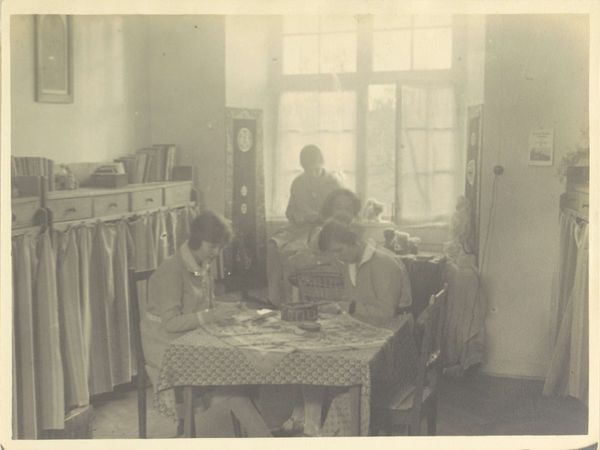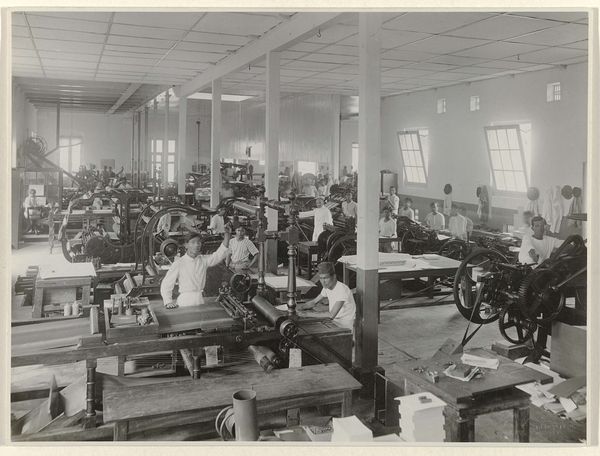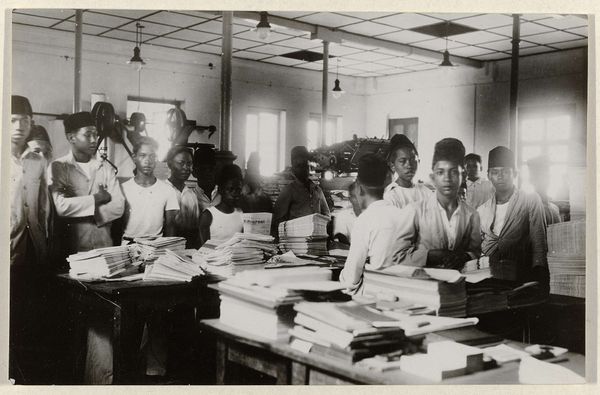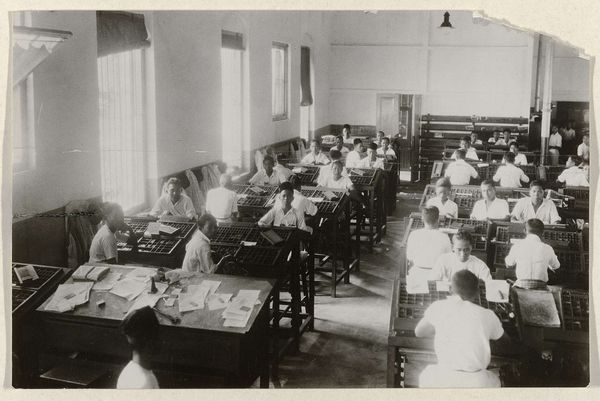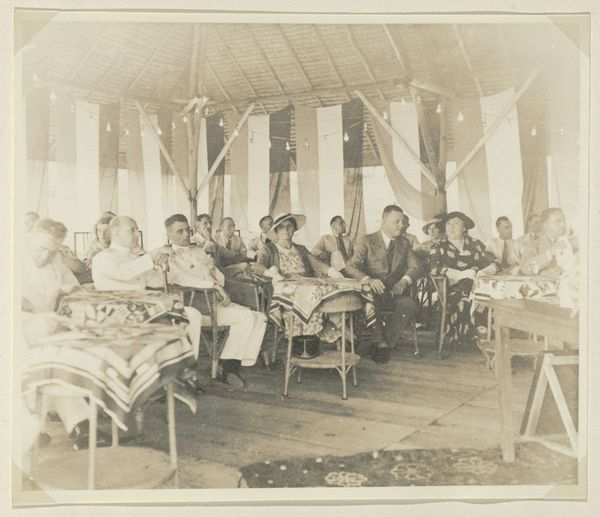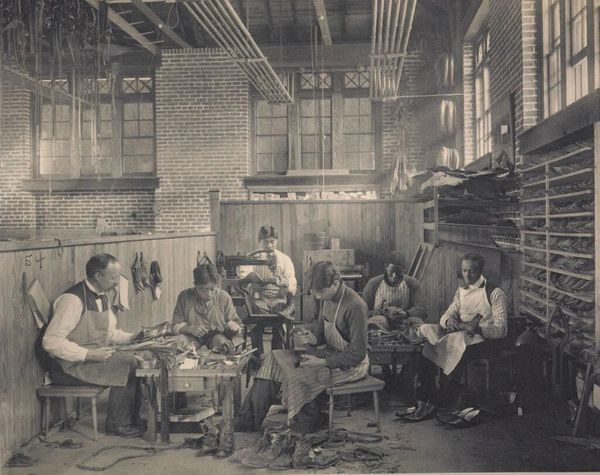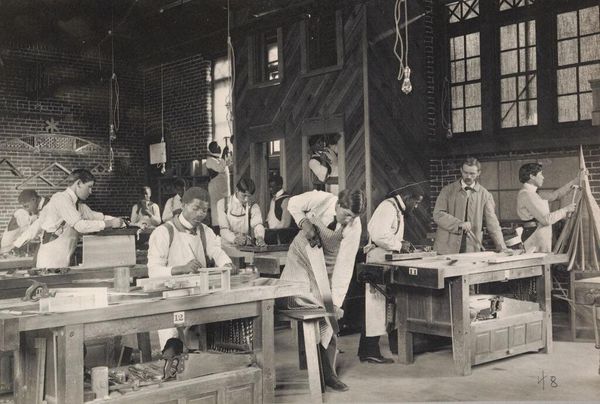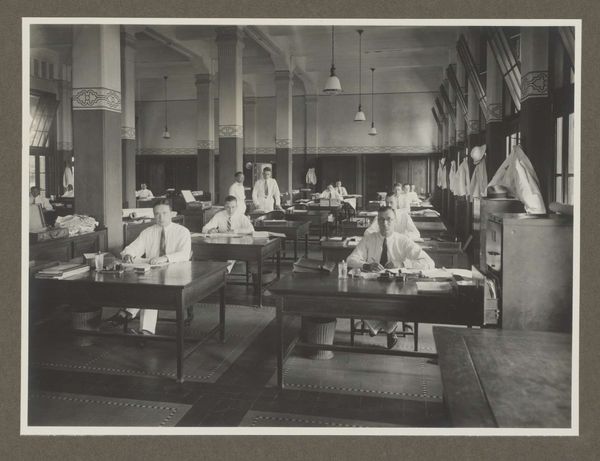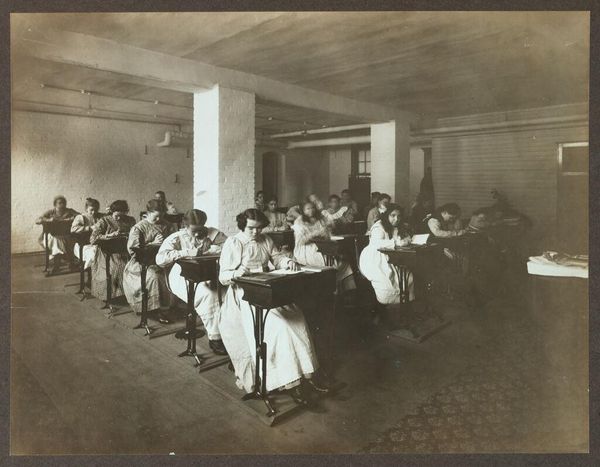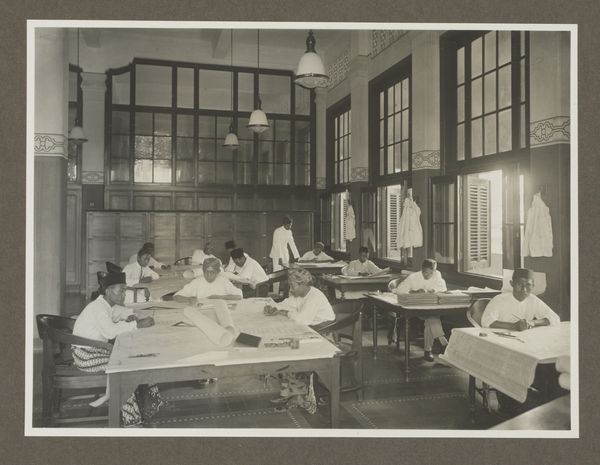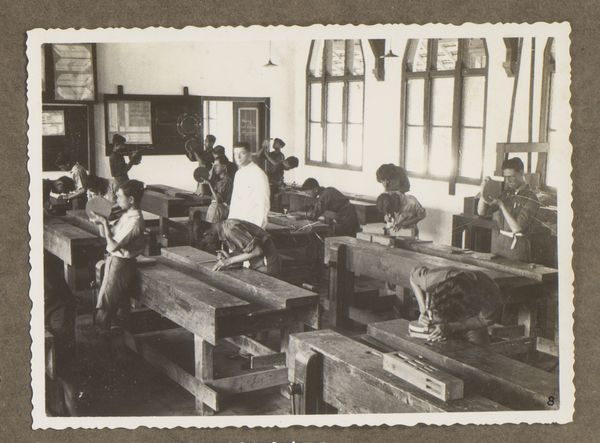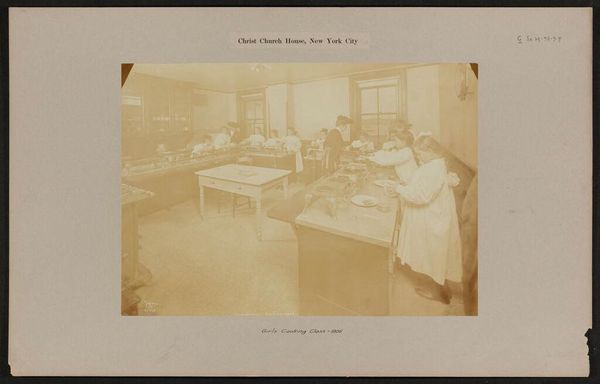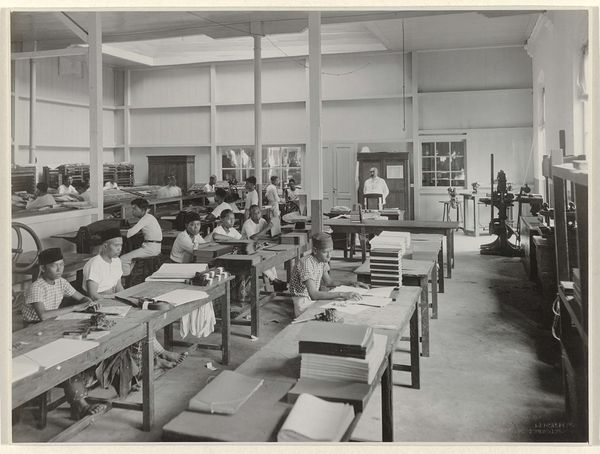
photography, gelatin-silver-print
#
portrait
#
social-realism
#
photography
#
gelatin-silver-print
#
ashcan-school
#
genre-painting
Dimensions: height 119 mm, width 169 mm
Copyright: Rijks Museum: Open Domain
Curator: Lewis Hine captured this gelatin silver print, titled "Five Young Seamstresses in a New York Workshop", sometime between 1906 and 1917. The photograph is a compelling example of social realism. Editor: It’s a stark image, isn't it? The confined space, the dim lighting… a certain bleakness permeates everything. All these women, crammed into this room… what a life. Curator: Hine's work frequently focused on documenting social injustices, particularly concerning child labor and working conditions. The image aligns with the Ashcan School, drawing attention to the everyday lives of marginalized communities. Think about what purpose it might serve to have genre paintings depicting work instead of aristocracy, too. Editor: The presence of sewing machines is potent here. A sewing machine can be symbolic of industry and opportunity, but within this cramped space, overshadowed by the sheer number of coats hanging, those sewing machines feel much more representative of drudgery, almost oppressive, perhaps reflecting cycles of dependence or entrapment. The light fixtures overhead look improvised, cheap. It reinforces the feeling that things are makeshift. Curator: Absolutely. We have to remember this was during a time of significant industrial expansion and immigration, with many people drawn to cities like New York hoping for a better future, but instead facing exploitation. Editor: Right. Those women likely thought they'd be coming here to build new lives. In some cases, perhaps escaping terrible oppression only to come here and have… this. I do wonder if the presence of those coats represents their own hopes for escape, a promise for a warmer place. And then what about the single bricked-up fireplace that takes up so much space for nothing? I see this as Hine making a larger statement about lost promises. Curator: You are speaking of powerful symbols here. That being said, his approach aimed at factual representation rather than heavy symbolic embellishment. His images aimed to make society re-think, especially as social and political debates over labor regulations and reforms were happening. Photography could sway these discussions. Editor: Yes, but I am also interested in the fact that he would include it in his photograph; even if it's merely documenting reality as he sees it, reality is symbolically resonant. Curator: In any case, I hope this has illuminated a little about the work of Lewis Hine. Editor: Indeed. It seems like we could interpret this photograph for days to come, still, and it continues to elicit very intense reactions in viewers, myself included.
Comments
No comments
Be the first to comment and join the conversation on the ultimate creative platform.
